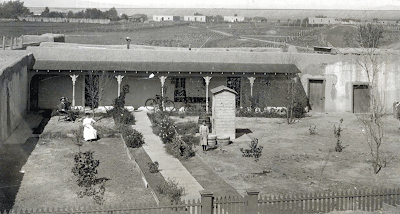 Click on the image to make it larger
Click on the image to make it larger This is the Martinez hacienda in Taos. You can tour it today for a few dollars. You cannot beat the experience to get a feel how some of our ancestors lived. Some were the like the hacienda owners and some were like the folks who kept it going.
New Mexico history is family history for Hispanic New Mexicans. Especially the Spanish period (1598 to 1820) and the Mexican period (1820 to 1846). The American period (1846 to now) is also family history, but now there are many families. Before the Americans came and annexed the province we were one huge family.
It appears that thru time, 1598 - 1846, we became primos, tios y tias, either thru blood and/or marriage. Maybe a few generations separating most of us, but that is all it did. Was to separate us. Back then we were a pretty homogeneous people. We all had roots in Spain, we all had roots in Mexico, we were all Catholic. Most of us had Native American blood of some kind. We all spoke the same language, we all ate essentially the same food.
We also faced the same dangers. Starvation, Indios barbaros, los Americanos, the Chihuahua merchants.
250 years of living in isolation in the upper reaches of the Rio Grande and its tributaries had caused this. 250 years is no small span of time. It might not be much for a tree, but for New Mexicans it was a long time.
Think about the 250 years this way. The Americans have been in New Mexico 163 years. New Mexico has been a state 97 years. 1776 to 2009 is 233 years.
